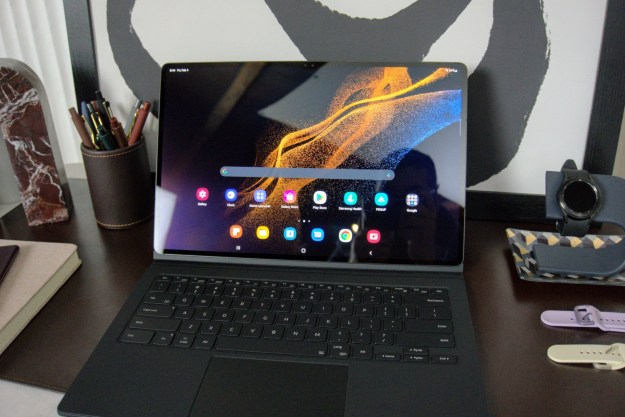Today’s notebook news may wind up being all about Apple, but South Korean electronics giant Samsung is making some interesting moves of its own: it is re-entering the U.S. notebook market with three slim, stylish models specifically targeting the sorts of customers who would consider Apple’s MacBook Air or ultra-tiny Sony Vaios…plus the lineup includes a netbook for those folks considering tapping into the Asus Eee craze.
Samsung’s X-series of notebook computers offer thin and stylish designs, and are aimed at the premium notebook market. The Samsung X360 weights just 2.8 pounds with a magnesium alloy chassis and a “pebble” style keyboard. The unit sports an Intel Core 2 Duo mobile processor and Intel Centrino 2 low-power technology, a 128 GB SSD hard drive, a 13.3-inch WXGA (1,280 by 800 pixel) LED-backlit screen, along with a 7-in-1 media car reader, 802.11a/b/g/n and Bluetooth 2.0+EDR wireless connectivity, HDMI output, and a 1.3 megapixel Web cam. The X360 will support 1 to 4 GB of RAM, offers an eternal DVD super multi dual layer DVD burner, and claims battery life of up to 10 hours with an optional 6-cell battery. The X360 will carry a $2,499 price tag,; if that’s a little spendy, the X460 will offer mostly-identical specs with a 160 GB traditional hard drive for $1,899—although it weights almost 4.2 pounds.
For the netbook crowd, Samsung is offering the NC10, a small-cased ultraportable in white or metallic blue that offers a 10.2-inch display and a 160 GB hard drive at prices starting at $499.
Samsung plans to ramp up U.S. distribution of its notebooks by early 2009, adding distributors and brick-and-mortar retail partners. The company also plans to introduce new notebooks targeting traditional business and enterprise users. And Samsung may have something going for it: after all, it makes many of the components that go into the world’s top-selling notebook computers—aside from processors and graphics controllers, Samsung pretty much makes everything else that would go into a standard computer…especially LED-backlist LCD displays. But it remains to be seen if the company can establish itself as a reliable brand in the U.S. market alongside other Asian competitors like Toshiba and Sony, along with stalwart U.S. brands like Dell, HP, and Apple.
Editors' Recommendations
- Best Samsung Galaxy deals: S24, Buds, Watches and more
- Samsung ViewFinity S9 vs. Apple Studio Display: a close comparison?
- Chinese hackers targeting critical U.S. infrastructure, Microsoft warns
- As ransomware hits this U.S. hospital, lives could be at risk
- Nreal’s Air AR glasses head to the U.S., ready to rock with iPhones


